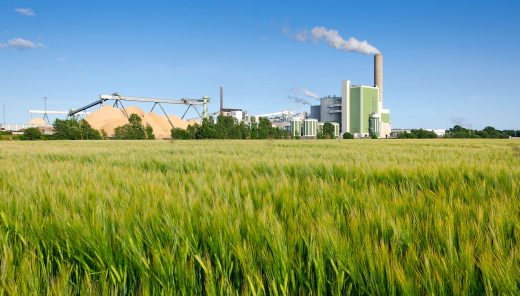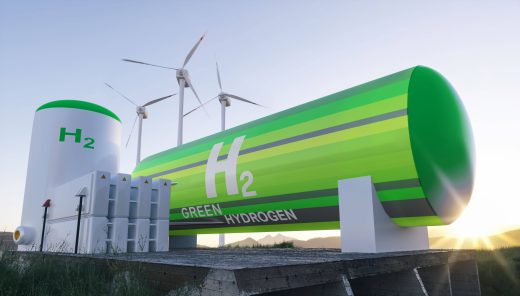Designing healthy schools and playgrounds
Published on: June 1, 2023
Is your living environment keeping you healthy?
How do we plan and design to improve human health and well-being? What challenges can we expect in our neighbourhoods in the future?
Sweco specialists present key measures on how to create healthier living environments and buildings – for education, social connections, physical activity, productivity, and recreation.
By looking at some of the important factors affecting our health – greenery, air, light, noise and movement – we can do much to incorporate health and well-being into the environments. – Camilla Julie Hvid, engineer and landscape architect at Sweco in Denmark.
The healthy city is both efficient in reducing air pollution and stress as well as providing a playful, active green indoor and outdoor environment. – Daniel Hojniak, senior sustainability and well-being consultant
Promoting movement
A significant decline in physical activity and an increase in time spent in sedentary activities was observed during the Covid pandemic and after, especially among young people.
Buildings and public spaces that are safe, spacious, and inviting to use for all ages and abilities is a prerequisite when designing for healthy movement This requires an integrated approach to designing buildings and public spaces. Outdoor public spaces should be designed as an intricate network connecting places of interaction, accessibility, and activity. The ideal playground is a place that combines designed activity but also triggers the imagination of those that use of space.
Israel square, Copenhagen, Denmark
Israels Plads is a cohesive urban space located in inner Copenhagen. The square is a living urban, breathing space, protected from traffic that connects the square and park. Designed by Sweco‘s architects for Copenhagen Municipality the square will accommodate Copenhageners’ everyday life offering many opportunities for movement and play.

Photo Credit: Niels Nygaard
Active architecture in schools
People spend roughly 90 percent of their time indoors. The way we design our buildings is essential to increase healthy movement. Buildings that include spaces for play or sport, or that are well connected to outdoor spaces, are also more likely to promote healthy living.
Healthier indoor conditions, a more balanced natural outdoor environment and design that promotes physical activity, can result in both mental and physical health benefits for its residents.


Lindbjerg school, Herning, Denmark
The new Lindbjerg School is a place where play, learning and movement are in focus. Designed by Sweco’s architects in cooperation with KPC for Herning Municipality, the school is one of Denmark’s first 24-7 schools. Not only does it house teaching facilities, but it also functions as a new meetup space for the local community, with sports halls, after-school programmes, a café, a library and cultural offerings.
Vækst, Copenhagen, Denmark
Vækst is the name of the new building in Sydhavnen which will cater for the area’s youngest and oldest children in the future. The City of Copenhagen and the TRUST partnership are together with Sweco developing and building a new lower secondary school and day care centre with ambitious, innovative learning spaces and growth gardens. Other partners are Enemærke & Petersen, Nøhr & Sigsgaard, Norconsult, DOMINIA, Lytt Architecture, Kragh & Berglund

Photo Credit: TRUST
Noise levels and good acoustics
Good acoustic conditions are key for high performance in concentration-intensive work, both at home and in offices and schools. This applies both to insulation from outside noise e.g., through the use of soundproof windows, and to achieving a pleasant indoor acoustic climate that has a sufficiently low reverberation time (the time a sound persists after it is produced). All these actions enable people to stay in a room longer without feeling tired.
When planning and designing new infrastructure, it is crucial to maintain a focus on noise – including during the early stages of the planning process – by making noise maps. The later we introduce plans to control noise, the harder it gets.
Kindergarden Rymarksvej Copenhagen, Denmark
Opening the facade towards the outdoor areas creates immediate access to the outdoor areas. We have created a building that is consistent in its choice of materials, that is robust and actively relates to its users. Acoustic panels and ceiling are elements that help reduce the indoor noise and create a comfortable indoor acoustic environment. The integration between school and local neighbourhood is an expression of a new and more sustainable way of understanding the interfaces in the city. In this project, Sweco’s architects collaborated with Ason, Niras, Active City Transformation (ACT) and Thing & Brandt Landskab.

Photo Credit: Hampus Berndtson
Let there be natural light indoor
Lighting, whether natural or artificial, plays a key role in overall human health and impacts us both mentally and physically. Considering natural light in the interior design of homes, workplaces and health care facilities is important because of the advantages of natural light on human health.
Hedlunda preschool, Umeå, Sweden
Designed by Sweco’s architects for the Municipality of Umeå, the Hedlunda preschool is the most northern location globally for an internationally certified passive house building (PHI). In December when sun sets at 13.45, with little more than four hours of daylight in Umeå, there is a great need to optimize the natural light indoors. Extended window frames interact with the low Nordic sunlight to create a dynamic three-dimensional graphic effect. A double-height art studio/workshop and plant conservatory are located in the centre of the building, offering a dynamic three-dimensional graphic effect.


Improved ventilation
The issue we most commonly face in buildings is a high CO2 concentration caused by poor ventilation. Adequate ventilation is key to create a healthy environment. The primary source of CO2 in buildings is human respiration.
In situations where outdoor air is polluted or indoor activity causes pollution, air quality should be monitored in real time and action taken to reduce pollutant levels. Regulations across Europe set advisory levels for the minimum required fresh air flow in buildings. These advisory levels are also incorporated in certification methods such as WELL, BREEAM, DGNB and LEED.
The need for green areas, green quality – not just quantity
The pandemic has revealed the significance of green urban spaces to human health. We saw an increase in people’s use of green areas, such as local parks, public beaches, marinas and national parks.
Studies have shown if you live closer than 50 metres to a green area, you will visit a green area between about 3–4 times a week, but if you live 1,000 metres from a green area you will only visit it approximately once a week.
When developing green spaces, it’s not enough to plant trees or other green structures and elements. The quality of the space is important, too, as well as how it’s perceived and experienced by the user. It’s important to use local, native species and consult with biologists to find the specific species with the best potential for the area.
King Boudiun, Brussels, Belgium
The park in Jette, Brussels provides a large variety of species and diverse habitats with many options for natural play and encounters. Sweco’s experts collaborated with the client BIM Brussels Institute for the Environment to develop a child-friendly design focused on the future generation as they are the best indicators of a healthy city.

Photo Credit: Stijn Bollaert
3 key insights for designing buildings to promote healthier living environments
- Mind the link between indoor and outdoor environments
As outdoor and indoor environments are closely connected, urban planners need to think holistically about the built environment. In most cases, the need for a highly sophisticated and expensive air treatment system is needed because of the polluted outdoor air. In all developments, the focus should be on how to mitigate emissions and adapt to develop healthier neighbourhoods and buildings.
Before starting to design artificial lighting systems, make the best use of natural light. Natural light is free and human bodies like it – smart facade design and architectural solutions can provide natural light in the indoor environment.
Maintain a focus on noise – include noise maps during the early stages of the planning process, to reduce noise pollution. - Greenery as thoughtful design
Our future cities should be built using more green areas per inhabitant and higher-quality green areas. Nature should be considered when designing urban areas, streets, and buildings.
View the neighbourhood as part of an ecosystem. Nature not only benefits our mental and physical health but contributes to better air quality, lower noise pollution, more absorbed CO2 emissions and, if planned well with a variety of species, richer biodiversity. - Promote movement
Our future cities and buildings should inspire people to make the healthiest choices when they move around. To accomplish this, engineers and architects have got to focus on designing buildings, stairs, corridors, urban spaces and infrastructure in a much more inviting and innovative way. Also, taking accessibility aspects into account.
For more detailed information read the report: “Healthy buildings, cities and you – how to design future living environments”




